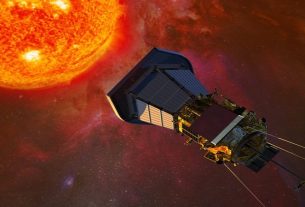A team of researchers has recently developed small “artificial sunflowers” capable of tracking sunlight. What to maximize the yields of photovoltaic systems.
Sunflowers, to survive, developed during their evolution a very interesting technique: heliotropism. The idea is to follow the sun’s light, source of heat, in order to warm their reproductive organs. In doing so, sunflowers attract more pollinators. What a study proposes today is to reproduce this very intelligent system thanks to nanotechnology.
To imitate nature
It is to date the first artificial material capable of phototropism, report researchers in Nature Nanotechnology. The idea is to install temperature-sensitive materials in very thin support structures, then able to move towards a source of bright light.
For this work, US researchers from the University of California and Arizona State University have tested several approaches: a hydrogel containing gold nanoparticles, an entanglement of photosensitive polymers and a type of liquid crystal elastomer embedded in a dye absorbing light.
All these materials were placed at the end of a rod one millimeter in diameter. The idea was then to aim them with a laser to observe their reactions. All tested materials reacted strongly to light, contracting on one side and expanding on the other, allowing the stem to lean systematically toward the laser.
Then immersed in water, all the devices managed to create steam. Proof that all had succeeded in converting light into heat. After calculations, it appears that these small “artificial sunflowers”, called SunBOT, were up to four times more effective at absorbing solar energy at steep angles than flat and static devices.
A host of applications
This is just a start, but it works. Ultimately, these devices could outperform any system wiping out a loss of efficiency due to a moving energy source.
“This work can be useful for improved solar collectors, adaptive signal receivers, smart windows, autonomous robotics, spacecraft solar sails, guided surgeries, self-regulating optical devices, and intelligent energy generation. solar and biofuels, for example), write the researchers.
Proof, once again, that nature is today our best teacher.

Email: ben@satprwire.com Phone: +44 20 4732 1985
Ben has been listening to the technology news for quite some time that he needs just a single read to get an idea surrounding the topic. Ben is our go-to choice for in-depth reviews as well as the normal articles we cover on a normal basis.



